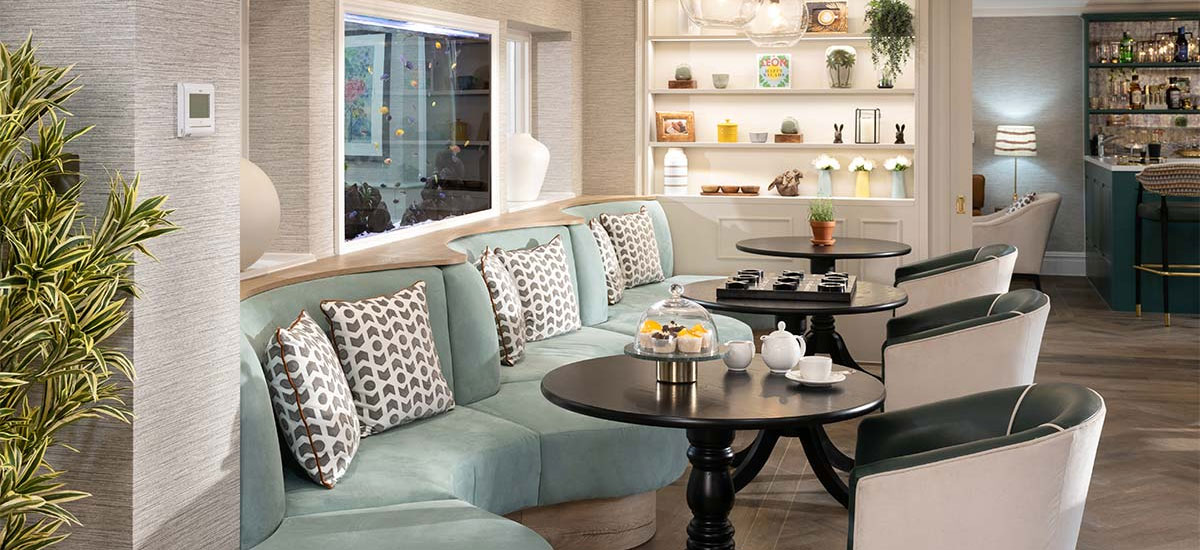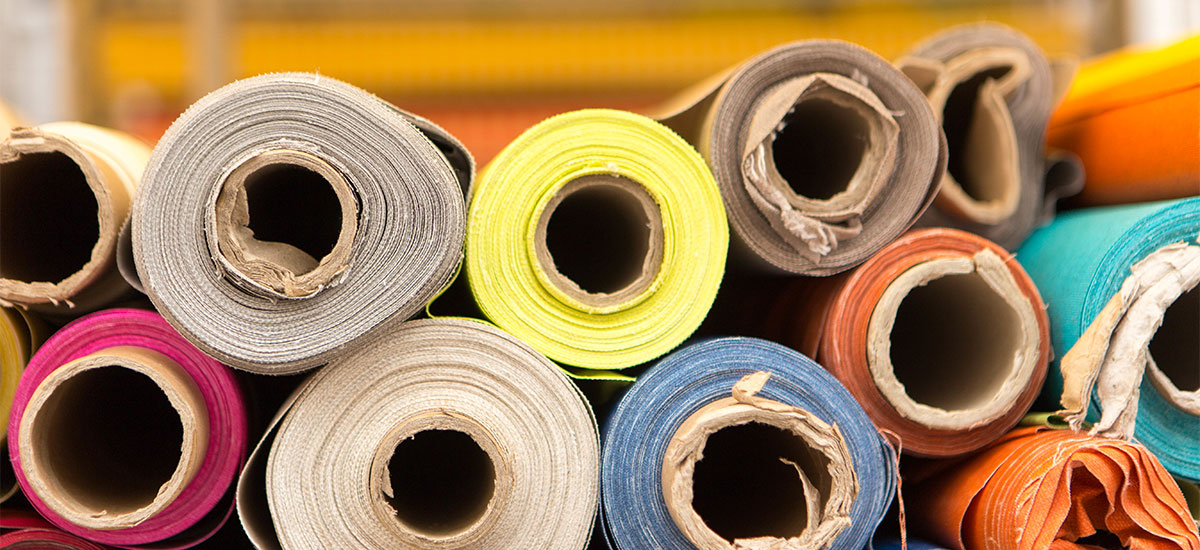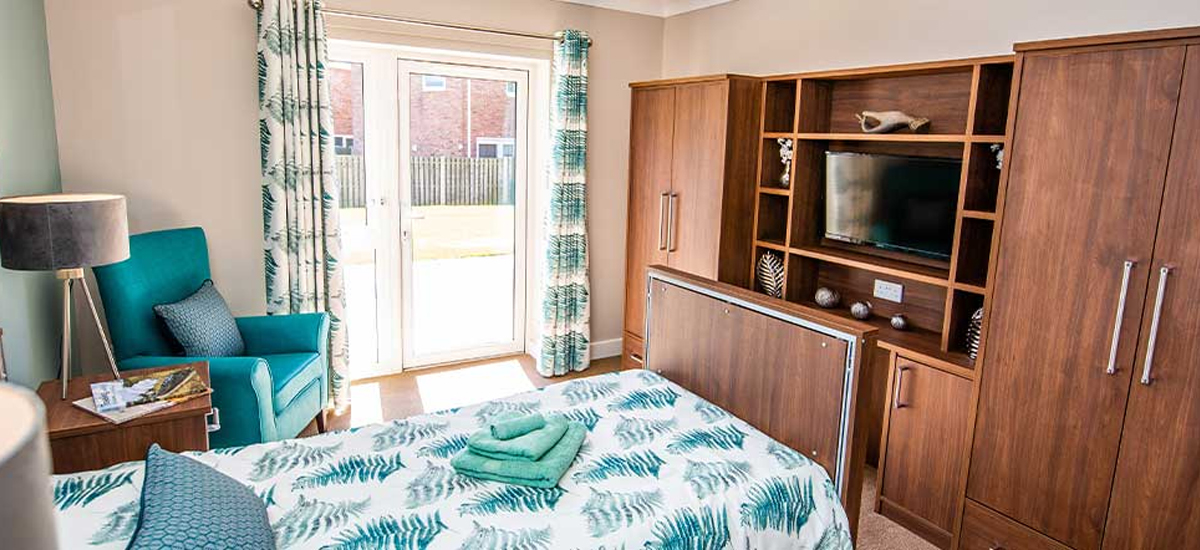We use cookies to make your experience better. To comply with the new e-Privacy directive, we need to ask for your consent to set the cookies. Learn more.
Curtain heading types explained
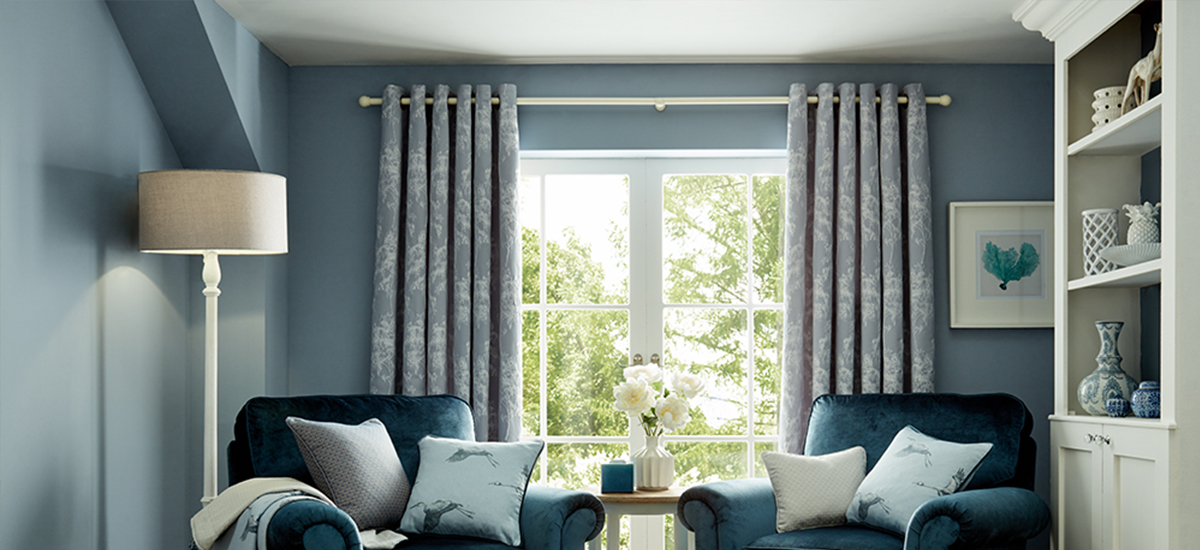
When purchasing your new curtains for your care home, understanding the different heading types that are available to choose from can be a little daunting.
Heading refers to the top of the curtain and how it is attached to the pole/track. Different heading types make the curtains hang in different ways and make a much larger difference to the look of the curtains than you may think.
At Edison & Day® we offer 4 different heading types as standard: eyelet, pencil pleat, pinch pleat and wave headed.
Eyelet curtains

Eyelets give a contemporary modern look to the room and are more suited to modern environments.
Eyelet curtains hang off a curtain pole with the pole running through metal-edged holes (eyelets) and fall in neat and even pleats. When open they stack back neatly without the need for a curtain tieback.
This heading type is not suitable for bay windows.
Pencil Pleat Curtains
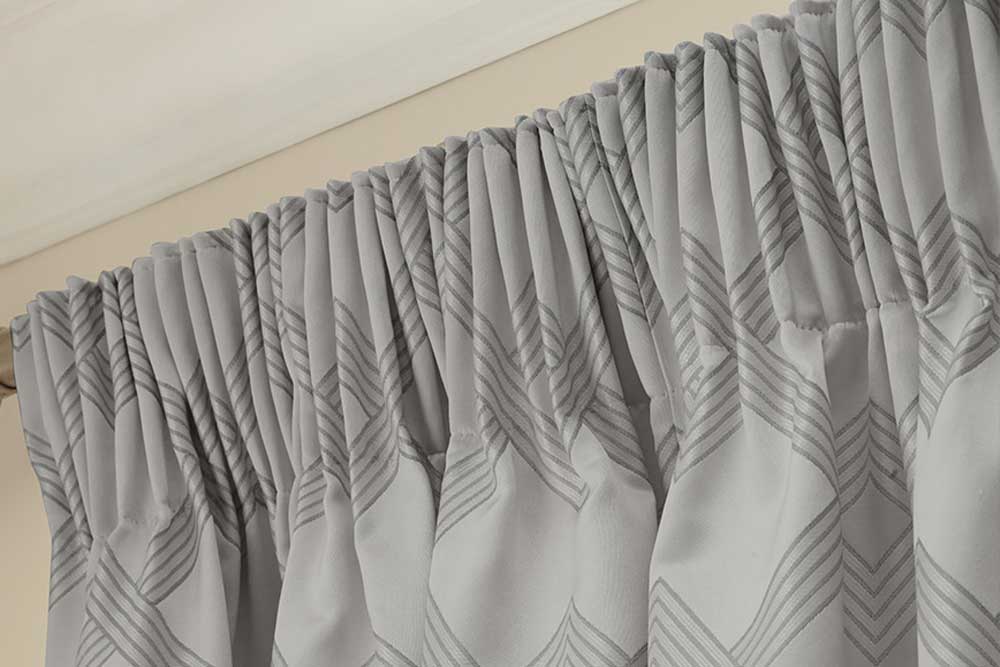
Pencil pleat curtains are a neat and elegant heading type and give a contemporary/traditional look. The name pencil pleat comes from the way the tightly packed folds resemble a row of pencils.
Pencil pleat curtains are typically on a track, but they are also suitable for putting on a pole by using pole rings.
Pinch Pleat Curtains

Pinch pleat curtains are full and luxurious and are suited to modern or traditional environments. Pleats stack neatly back but due to their fullness ensure there is enough room on either side of the window opening to ensure light is not blocked when the curtains are open.
This heading style is suitable for use on both a track and a pole.
Wave Headed Curtains

Wave headed curtains are a contemporary heading type and look similar to eyelet curtains but without a pole and eyelets. Wave headed curtains use a specialist track and are designed to stack back very neatly maximising light into the room when open.
Wave headed curtains are particularly impactful when used in rooms with a large window like a French window or bifold doors. They are also suitable for use in bay windows where you are looking for an eyelet curtain look.
I trust this article has been useful in explaining the differences between the different heading types we offer at Edison & Day®. If you do have any further questions please reach out to us either via phone or email or by using the live chat in the corner of this page.
Who is Edison & Day?
We are a UK manufacturer of care home furniture and soft furnishings, we have been supplying the market with high-quality furniture for 15 years, we create furniture and experiences that have the personal touch.
We have the largest care home furniture selection in the UK that is available to order online and with our industry-leading Dayex service, you can have your new furniture in as little as 5 working days.
All images courtesy of ILIV (iliv.co.uk)
When purchasing your new curtains for your care home, understanding the different heading types that are available to choose from can be a little daunting.
Heading refers to the top of the curtain and how it is attached to the pole/track. Different heading types make the curtains hang in different ways and make a much larger difference to the look of the curtains than you may think.
At Edison & Day® we offer 4 different heading types as standard: eyelet, pencil pleat, pinch pleat and wave headed.
Eyelet Curtains
Eyelets give a contemporary modern look to the room and are more suited to modern environments.
Eyelet curtains hang off a curtain pole with the pole running through metal-edged holes (eyelets) and fall in neat and even pleats. When open they stack back neatly without the need for a curtain tieback.
This heading type is not suitable for bay windows.




Pencil Pleat Curtains
Pencil pleat curtains are a neat and elegant heading type and give a contemporary/traditional look. The name pencil pleat comes from the way the tightly packed folds resemble a row of pencils.
Pencil pleat curtains are typically on a track, but they are also suitable for putting on a pole by using pole rings.
Pinch Pleat
Pinch pleat curtains are full and luxurious and are suited to modern or traditional environments. Pleats stack neatly back but due to their fullness ensure there is enough room on either side of the window opening to ensure light is not blocked when the curtains are open.
This heading style is suitable for use on both a track and a pole.




Wave Headed Curtains
Wave headed curtains are a contemporary heading type and look similar to eyelet curtains but without a pole and eyelets. Wave headed curtains use a specialist track and are designed to stack back very neatly maximising light into the room when open.
Wave headed curtains are particularly impactful when used in rooms with a large window like a French window or bifold doors. They are also suitable for use in bay windows where you are looking for an eyelet curtain look.
I trust this article has been useful in explaining the differences between the different heading types we offer at Edison & Day®. If you do have any further questions please reach out to us either via phone or email or by using the live chat in the corner of this page.
Who is Edison & Day?
We are a UK manufacturer of care home furniture and soft furnishings, we have been supplying the market with high-quality furniture for 15 years, we create furniture and experiences that have the personal touch.
We have the largest care home furniture selection in the UK that is available to order online and with our industry-leading Dayex service, you can have your new furniture in as little as 5 working days.
All images courtesy of ILIV (iliv.co.uk)

